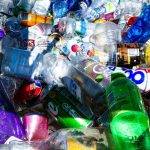As ecommerce sales have increased during the COVID-19 stay-at-home directive, consumers are paying more attention to the sustainability of packaging for their shipments. And brands have plenty of eco-options now, too.
We need to rethink protective packaging from a sustainability perspective. Through conversations with industry leaders and research on this topic, the Sustainable Packaging Coalition (SPC) has dedicated time to exploring what that might mean and what innovations are next.
So far, 2020 has been a remarkable year in the world of sustainable protective packaging innovations, driven in large part by the interest in and growth of ecommerce. While ecommerce remains a small percentage of most companies’ overall sales, it is the fastest-growing part, growing 3 times faster than the entire US retail industry. In recent months, ecommerce has become an especially relevant channel, enabling delivery of products and medicine while consumers are in quarantine during the COVID-19 outbreak. One report shows ecommerce retail sales rose 209% during the month of April.
The supply chains for traditional retail and ecommerce are much different. According to DHL’s recent presentation during SPC Virtual Events on its Rethinking Packaging Trend Report, ecommerce packaging is 20 times more frequently handled, with more touch points where a product can be damaged. Replacing damaged products accounts for much higher greenhouse gas emissions and resource usage than the packaging used. And avoiding damage in ecommerce is also a critical part of a positive consumer experience. Ecommerce therefore requires more durable and robust parcels, which, in general, means use of more material.
At the same time, the demand for sustainable packaging in general is on the rise. DHL found that the top trends shaping packaging strategy in the logistics industry include demand for sustainable packaging material and public awareness of packaging waste, ranking at the top of the list along with “provide a positive customer experience.” Global awareness of ocean plastic pollution, in particular, has put pressure on plastics, a material the logistics industry depends on considerably. Many countries have been putting bans on single-use plastics.
Protective packaging does not often perform well in terms of both performance and broader sustainability. Reflecting the primary need to protect the product, oftentimes protective packaging relies on excessive quantity of material, use of bulky material, use of material that is not easily recyclable, or use of material that comes from unsustainable sources, which creates negative environmental impacts. This occurs in both business-to-business (B2B) and business-to-consumer (B2C) ecommerce logistics environments.
The rise of ecommerce has amplified these challenges, as ecommerce for direct delivery to consumers is less mature than B2B logistics and so is generally less optimized. According to DHL, more than 24% of ecommerce packaging is empty space. In addition, end customers directly interact with packaging used in ecommerce. Rather than bulk items being shipped to a store, ecommerce directly ships single items or groups of unique items to the customer. This means that this previously “invisible” B2B transport packaging becomes visible to consumers, who must interact with and manage the disposal of this packaging. Customers can see material use and volumetric inefficiency directly, which negatively impacts their unboxing experience and brand perception.
Innovations to explore.
We need to rethink protective packaging from a sustainability perspective. Through conversations with industry leaders and research on this topic, the SPC has dedicated time to exploring what that might mean and what innovations are next.
According to DHL, many emerging data tools exist to improve space efficiency, such as modeling and simulation tools used during development that can assess packaging options in a virtual world while also anticipating packaging size and protection needs. In SPC’s recent virtual Packaging Chat with Microsoft, they also mentioned they are using this technology to optimize their packaging. Other innovations like “box on demand” also offer promise in this space.
DHL found that use of sustainable materials and reusable packaging options are two areas of high interest in packaging logistics. Sustainable materials that are recyclable/compostable and from renewable or recycled content are gaining a lot of traction in response to concerns around the environmental impact of plastics. DHL noted that there is a need to bring more of these packaging materials into the market to drive down costs, allowing them to be more widely adopted.
As far as reusable solutions, DHL notes that industry is eager to explore these. Some industries already use reusable systems at scale, like the automotive industry, and that interest is growing quickly in more sectors. Ecommerce is taking a lead in expanding the use of reusable packaging. DHL itself is piloting a reusable solution in North America.
Source : www.packagingdigest.com


